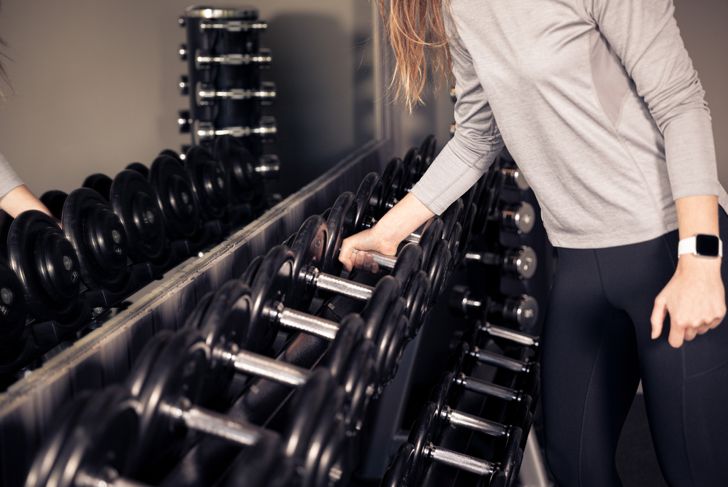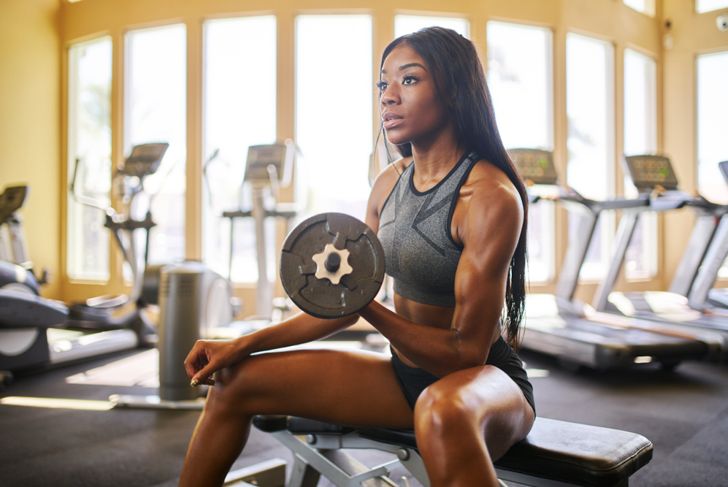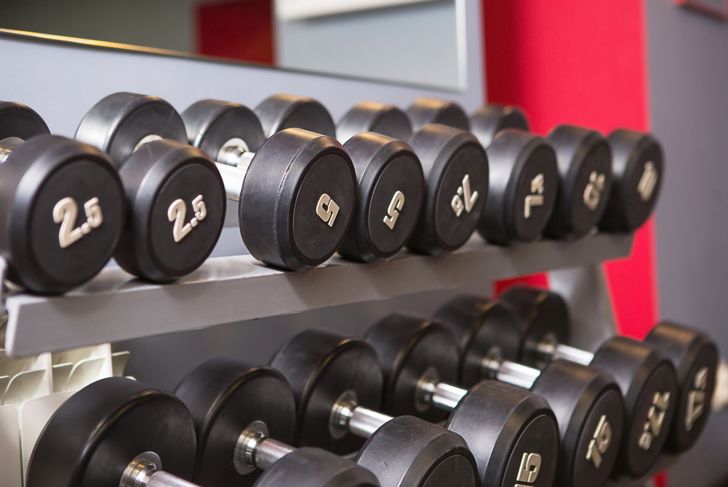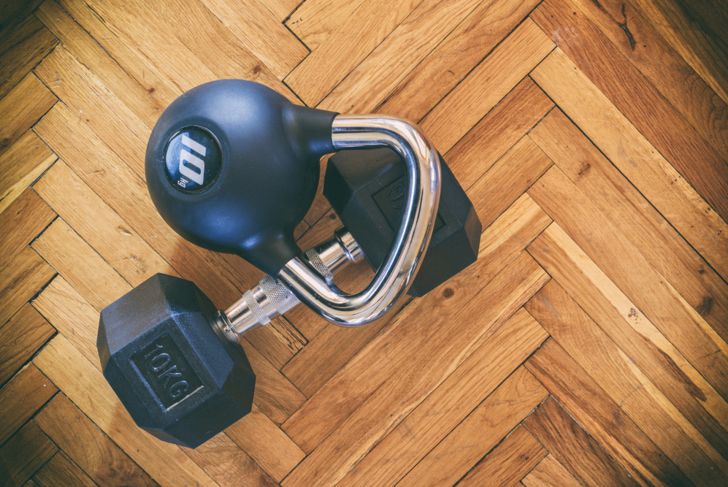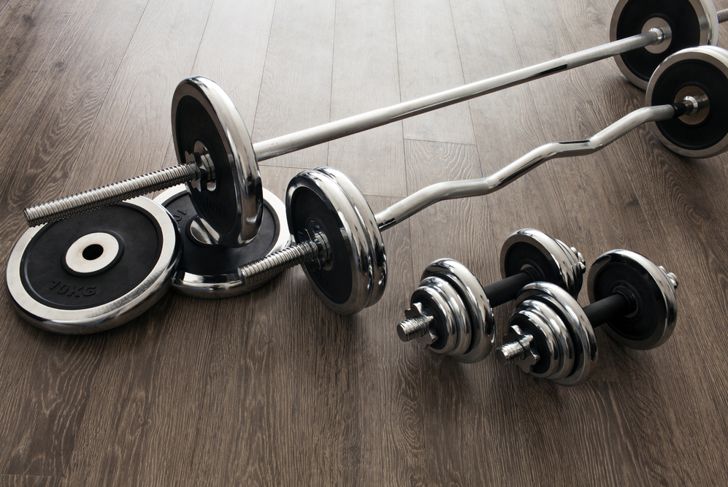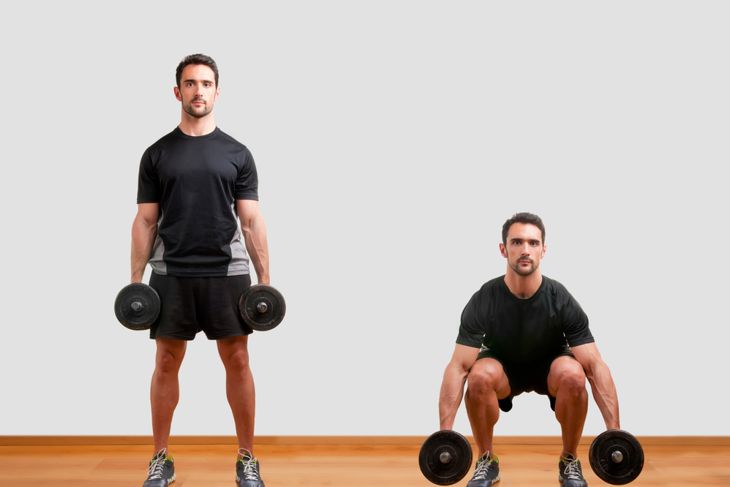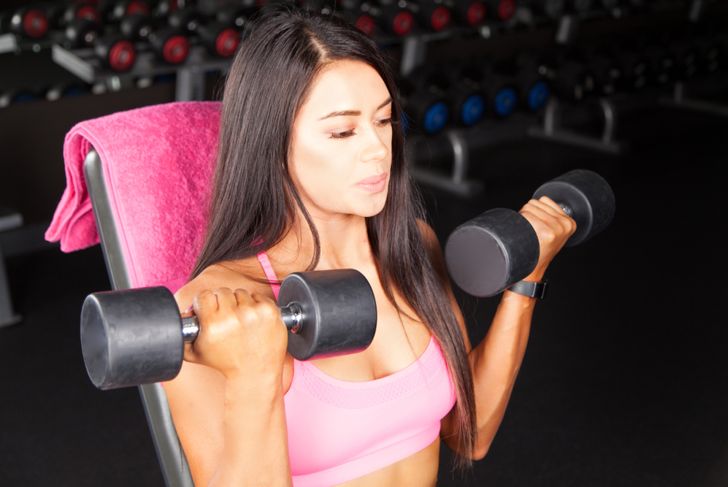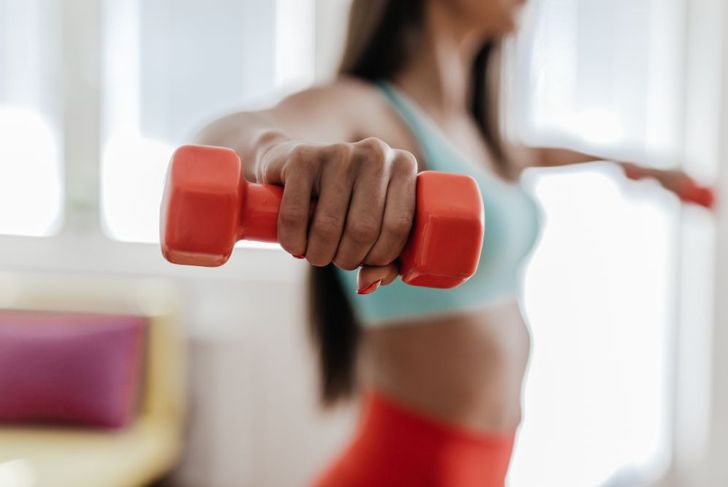Dumbbells are one of many exercise equipment options for resistance training. They come in a range of weights, and when used properly, can provide a full-body workout. For people who work out in a gym and have access to all types of resistance equipment, dumbbells are most often used as a way to isolate specific muscles, but it’s also easy to get a good workout at home with only one or two pairs.
Getting Started
If you are new to resistance training, you may choose dumbbells because they seem less intimidating than hefting a barbell or swinging a kettlebell. Dumbbells are a great choice for the beginner lifter, but it is still important to exercise caution. Focus on form when lifting. Ideally, position yourself so you can see your reflection in a mirror. Things often feel much different than they look. Use control when lifting and lowering the weights. One challenge many people face when lifting dumbbells is resisting the urge to use momentum. Focus on feeling your muscles contract as you lift the weight. Look for a good video guide online to make sure you’re not developing any bad habits.
How Much Weight
There is some trial and error when choosing your starting weight. Select dumbbells that allow you to perform two to three sets of around 8 repetitions of the exercise with good form. To avoid the need to increase the dumbbell weights too frequently, select weight that is challenging and that doesn’t allow you to complete a full three sets of 12 reps. Once you can, you are ready to increase the weight.
Adding Weight
Moving up to a heavier dumbbell is one way to increase strength and work your muscles, but it isn’t the only way. Another option is to work the muscle to fatigue. Known as metabolic overload, this practice requires you to perform as many reps as possible without sacrificing good form. The process trains the cells in your muscles to better store glycogen, increasing muscle growth.
Kettlebell or Dumbbell?
The ability of the kettlebell to work multiple muscle groups with a single exercise makes it a popular choice for those who exercise at home. Kettlebells work your abs, arms, legs, and back just by engaging your muscles to hold the weight. They are an effective piece of equipment, but they are not suitable for everyone.It is easier to injure yourself swinging a kettlebell than through the more controlled movement of lifting dumbbells. The ability to use momentum to swing the weight also makes it tempting to lift more than you should. Finally, people with balance issues may find kettlebell moves unsafe.
Barbell or Dumbbell?
Barbells allow you to really load up the bar and lift heavy, as long as you have suitable auxiliary equipment, such as a squat rack and bench. As you can imagine, these take up a good bit of room, making it difficult to fit into many home gyms, especially in rooms that have to serve multiple purposes.Even people with access to barbell equipment can benefit from using dumbbells instead or in addition. The latter allow for a greater range of motion. They also allow you to target single muscle groups and isolate either side of your body independently. This prevents weaknesses when, in a bilateral exercise (one that works both sides at the same time) or one hitting multiple groups, a stronger muscle does the work for a weaker one.
Squats
Stand with your feet shoulder-width apart, holding a dumbbell in each hand, arms by your side. Bend your knees, concentrating on lowering yourself as if you were sitting in an invisible chair. Hold the movement at the bottom for a beat, then stand. Repeat for your chosen number of reps, always ensuring a slow, controlled pace.
Hip Thrusts
Position yourself so you are on your back, knees bent, and feet flat on the floor. Rest the dumbells on the hips, one in each hand. Keep your hands on the weights so they stay in place.Firm your abs and glutes, and press into your feet to lift your hips off of the floor. Pause for a beat at the top, then return to the floor. The movement comes from pressing with your feet, engaging the muscles of your lower body. Do not use your lower back to press yourself up, and if you feel sharp pains in the low back, do this exercise without weights.
Seated Curls
Sit in a chair that allows you to sit up straight with your feet flat on the floor. With a dumbbell in each hand, palms turned out, bend at the elbow to lift your hands toward your chest. Keep your elbows tucked in and your arms close to the body. After the first set, flip your hands over for the next set so your palms are facing behind you at the start.
Lateral Raise
Standing with your feet shoulder-width apart, legs straight but knees unlocked, hold your dumbbells with your hands resting at your sides. Slowly bring your arms straight out to each side, finishing when your hands are just above shoulder level. Your arms should be straight, but not rigid. Keep the elbows relaxed and don’t use momentum to jerk the weight up. Pause at the top of the movement, then return to the starting position. Most people need to use a lighter weight for exercises that take the weight far from the body.
Pullover to Curl
Once again, position yourself on the floor, facing the ceiling, with your knees bent and feet flat on the floor. Hold one dumbbell with both hands, and rest it on the floor above your head. This is the starting position. From here, pull your arms up until they are above your chest. Then, curl your upper body up, bringing the weight up with you. Pause, then lower yourself back to your starting position.

 Home
Home Health
Health Diet & Nutrition
Diet & Nutrition Living Well
Living Well More
More